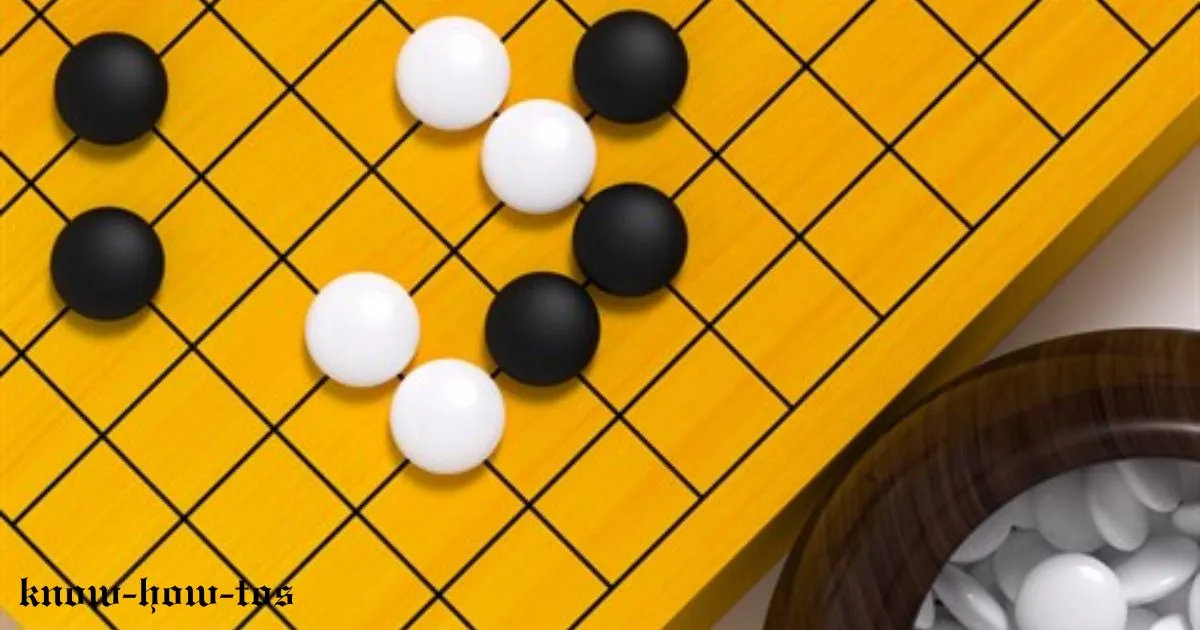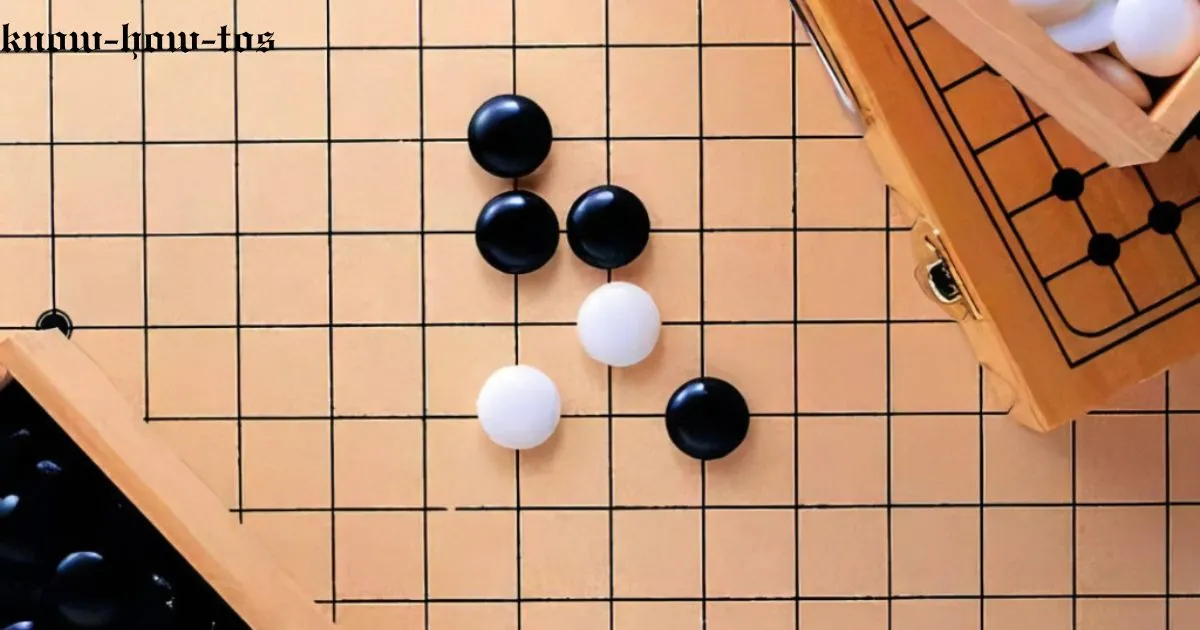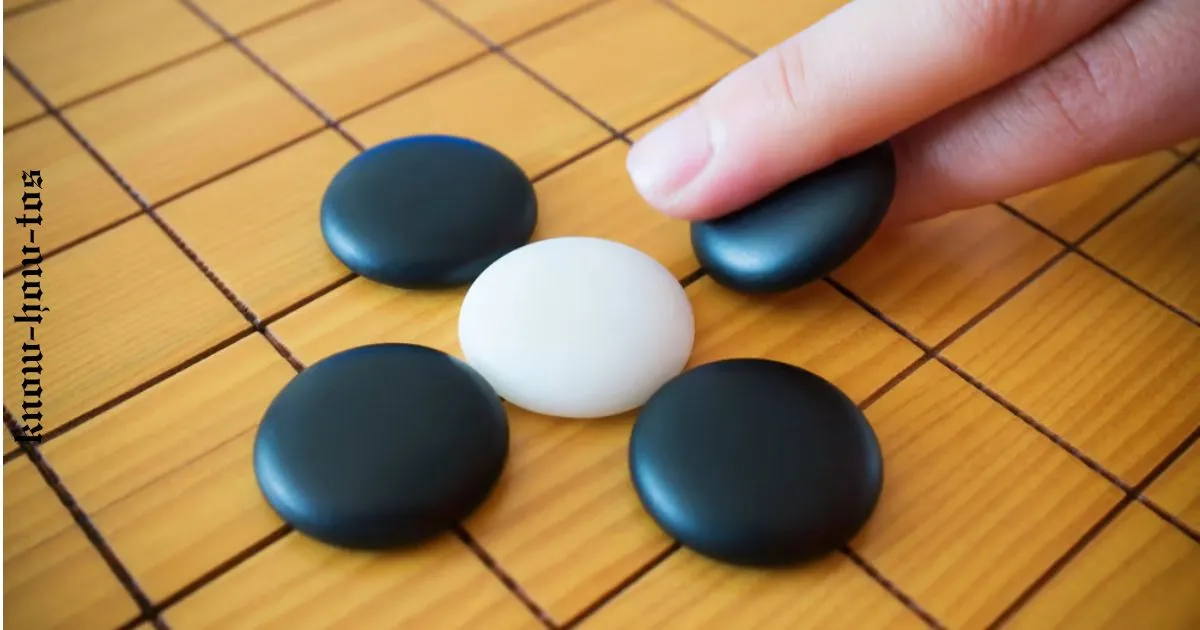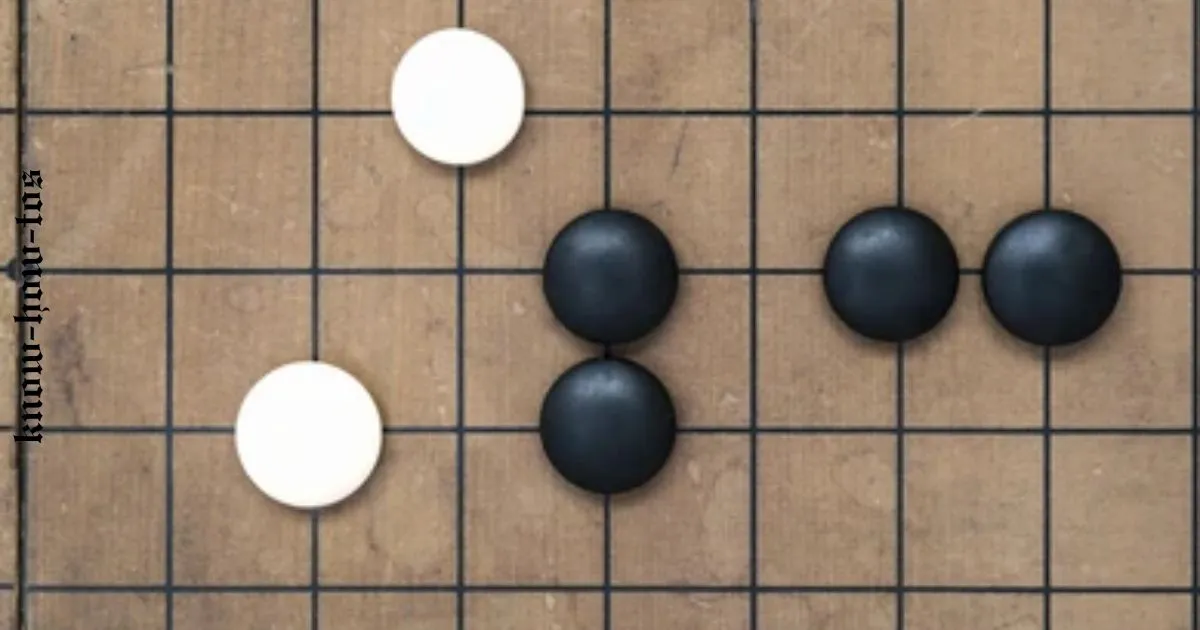HOW TO PLAY GOMOKU? EASY WINNING STRATEGY

In this guide, we’ll explore the fundamental rules and strategies that will help you master the art of How to play Gomoku.
Gomoku, often referred to as Five in a Row, is a classic board game that combines strategy and tactics in a simple yet captivating manner.
How to play Gomoku – My winning story
Last year in a quaint little village nestled between rolling hills, I along with company of friends, all huddled around a rustic wooden table beneath the shade of a giant oak tree. We were about to embark on a journey into the world of Gomoku, a captivating and strategic board game. With the sun dappling the board and a light breeze rustling the leaves, the stage was set for a thrilling adventure.
“Alright, everyone,” I began, my eyes gleaming with anticipation, “Gomoku is a game of wits, where the objective is to place five of your stones in a row, either horizontally, vertically, or diagonally. We’ll take turns putting our stones on the board, and the first one to get five in a row wins!”
My friend Sarah chimed in, “But what’s the order of play?”
“Great question,” I said. “In Gomoku, black usually goes first. So, I’ll take the black stones, and you guys can have the white ones.”
We began, and I placed my first black stone in the center square of the 15×15 grid. “The center is a strong starting point,” I explained, “because it gives us room to expand in all directions.”
The game went on, with each of us carefully considering our moves. I managed to secure my first win by utilizing several strategic approaches:
- The Fork: I started by creating two potential winning lines at the same time, forcing my opponent to defend against both. Sarah couldn’t block both avenues, and I sealed the victory with a diagonal connection.
- The Bridge: In another game, I built a bridge between two of my stones, which restricted Sarah’s options. With careful placement and a few defensive moves, I eventually achieved the five-in-a-row victory.
- The Trap: In a particularly tense match, I set a trap, luring Sarah into a seemingly advantageous position. She took the bait, and I closed in with a quick four-in-a-row sequence that led to my triumph.
Throughout our gaming sessions, I emphasized the importance of maintaining both offense and defense. We all experimented with various strategies, learning to control the board and anticipate our opponent’s moves.
As the sun began to dip below the horizon, our Gomoku marathon continued, and the oak tree’s shadow stretched across the board. In one memorable game, Sarah was one move away from winning, but I spotted a clever combination that allowed me to block her winning line while creating my own at the same time. It was a thrilling climax, and I emerged victorious yet again.
By the end of our Gomoku play adventure, we were all hooked on this timeless strategy game. We had laughed, strategized, and reveled in the art of competition, all while enjoying the great outdoors. Gomoku had not only provided hours of entertainment but had also sharpened our minds and fostered an even stronger bond among friends.
As the stars began to twinkle overhead, we decided to call it a day. The rustic wooden table under the ancient oak tree had been our battlefield, and Gomoku had been our guide to a day filled with strategy, laughter, and the sweet taste of victory. With a shared promise to return soon for another round, we left, knowing that Gomoku play had become an integral part of our lives, forever etched in our memories.

Booster tip:
Consider controlling the corners of the board early when play Gomoku game. Corners provide strategic advantages, as they allow you to create sequences in multiple directions and make it harder for your opponent to block your potential wins.
How do you play Gomoku?
Gomoku, also known as Five in a Row, is a two-player abstract strategy game traditionally played on a 15×15 grid. The objective of the game is to be the first player to achieve a sequence of five of their own pieces, either horizontally, vertically, or diagonally. Here’s a detailed guide on how to play Gomoku:
Setup
- Game Board: Begin with an empty 15×15 square grid. You can draw this grid on a piece of paper or use a Gomoku board specifically designed for the game.
- Pieces: Players use two distinct types of pieces – typically black and white, or any other easily distinguishable symbols.
Rules
- Turn Order: Gomoku is a turn-based game. Players take alternate turns, with one player using black and the other using white.
- Placing Pieces: On your turn, place one of your pieces on an empty intersection (the points where the grid lines intersect) on the game board. The aim is to create a sequence of five of your pieces in a row, either horizontally, vertically, or diagonally. This sequence can be either continuous or with open ends.
- Winning Condition: The game ends when one of the players successfully forms a sequence of five of their pieces in a row. The player who achieves this first wins the game.
- Draws: If the game board fills up, and no player has formed a winning sequence, the game is declared a draw. However, this is less common and occurs when both players exhibit strong defensive strategies.
Strategies
To excel in Gomoku, you need to combine offensive and defensive strategies:
- Offensive Strategy: The primary goal is to create a winning sequence of five pieces. This involves creating threats and forcing your opponent to defend against potential sequences while simultaneously working on your own.
- Defensive Strategy: Prevent your opponent from forming a sequence of five. Look out for their potential winning moves and block their sequences. Staying one step ahead in defense is crucial.
- Forking: Creating multiple potential winning sequences simultaneously is a powerful tactic. This forces your opponent into a difficult position as they can’t defend against all your threats at once.
- Open and Close Ends: Learn to distinguish between open and closed sequences. Open sequences are those with at least one open end, while closed sequences have both ends blocked. Focus on open sequences that are close to being complete, and block your opponent’s open sequences.
- Center Control: Controlling the central area of the board is often advantageous, as it provides more potential for creating sequences in various directions.
- Patterns: Familiarize yourself with common patterns and strategies used in Gomoku, such as “three-three,” “four-four,” and “overlines.” These patterns can help you plan your moves effectively.

10 Mind-blowing winning strategies and tips to win Gomoku play
Gomoku is a game that combines tactical thinking, pattern recognition, and strategic planning. While the rules are simple, mastering the game takes time and practice. As you gain experience, you’ll develop a deeper understanding of the nuances of Gomoku and become a more formidable player.
Remember that Gomoku is a dynamic game, and the best strategy often depends on the specific game situation and your opponent’s moves. Combining these strategies with a deep understanding of the game’s principles and patterns will significantly improve your chances of winning in Gomoku.

How to play Gomoku online?
- Choose a Platform: Find an online Gomoku website that offers multiplayer games.
- Invite or Join a Game: You can either invite a friend to play or join an open game with other players.
- Follow the Rules: Play your turns, aiming to create a sequence of five pieces before your opponent does.
- Win or Draw: The game will end when a player forms a winning sequence or when the board is filled, resulting in a draw.

How to install and play Gomoku within the imessage app using gamepigeon?
Installing Gomoku on iMessage:
- Open the iMessage app on your iOS device.
- Navigate to the chat of the friend with whom you wish to play Gomoku.
- Tap the App Store icon located at the bottom of your chat window.
- In the top right corner, tap the search button.
- In the search bar, type “GamePigeon.”
- Press the “Get” button and follow the on-screen instructions to install the GamePigeon app.
- Once installed, tap on the GamePigeon icon in your chat.
- From the list of games within GamePigeon, select “Gomoku” to launch it.
Inviting Your Friends to Play Gomoku:
- Open the chat with the friend you want to play Gomoku with. Ensure they have also downloaded the GamePigeon app.
- Tap the “GamePigeon” icon to access the list of games you’ve installed.
- Select the “Gomoku” icon to open the game.
- Send a game invitation to your friend by tapping the send button within the Gomoku game interface.
- If your friend accepts the invitation, they will have the opportunity to make the first move.
- Now that you have successfully installed the game and invited your friend, you’re all set to enjoy a game of Gomoku right within your iMessage conversations.
Read more: Ways to cut cigar
Final verdict
In conclusion, Gomoku is a fascinating and strategic board game that combines simplicity with depth. Mastering the game requires a balance of offensive and defensive tactics, a keen eye for patterns, and adaptability to your opponent’s moves. By employing key strategies, such as center control, forking, and corner dominance, you can enhance your chances of success in this challenging and engaging game. So, go ahead, put these strategies into practice, and enjoy the thrill of Gomoku!

